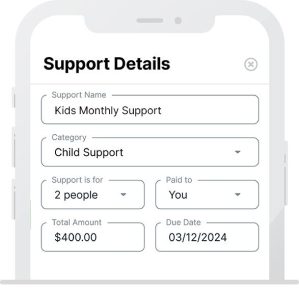Navigating the Financial Tightrope: The Hidden Burden of Caregiving Expenses for Average Families
In today’s fast-paced world, millions of families find themselves thrust into caregiving, often without much warning. Whether tending to an aging parent, a chronically ill spouse, or a special needs child, the responsibilities of caregiving can be both emotionally and financially overwhelming. While the emotional toll is widely recognized, the hidden financial burden of caregiving expenses often goes unnoticed, leaving families struggling to make ends meet.
The Costs of Caregiving Expenses
Caregiving expenses are more than just a labor of love; they represent a significant financial marathon. According to a report by AARP, the average annual out-of-pocket expenses for family caregivers amount to over $7,000. These caregiving expenses can include medical supplies, home modifications, transportation, and even the loss of income due to the caregiver’s inability to work full-time. For many families, these expenses are not just a dent in their budget—they’re a gaping hole that threatens their financial, personal, and mental stability.
Impact on Daily Life
The financial strain of caregiving expenses impacts many aspects of daily life. Caregivers often face:
- Increased Medical Costs: From medication and medical supplies to regular doctor’s visits and emergency care, these costs can quickly accumulate as caregiving expenses.
- Home Modifications: Adapting a home to meet the needs of a disabled or elderly loved one can be costly. This includes installing ramps, handrails, and accessible bathrooms, which can quickly run into thousands of dollars.
- Transportation Expenses: Regular trips to medical appointments, therapy sessions, and other care-related activities add up. Fuel, parking fees, and vehicle maintenance become part of the caregiving expenses routine.
- Lost Income: Many caregivers reduce their working hours or leave their jobs entirely to provide care. This loss of income can impact retirement savings, health insurance coverage, and overall financial security, adding to the caregiving expenses.
The Emotional and Financial Ripple Effect
The emotional toll of caregiving is well-documented, but its financial impact, including the burden of caregiving expenses, can also have a profound ripple effect. Families may find themselves dipping into savings, taking on debt, or even seeking assistance from food banks and community services. This financial instability can lead to stress, anxiety, and even depression, further complicating the caregiving journey.
Strategies for Navigating the Financial Tightrope
While the challenges are significant, there are strategies that families can use to manage the financial burden of caregiving expenses:
- Seek Financial Assistance: Many communities offer financial aid, grants, and subsidies for caregivers. Research local, state, and federal programs that can provide support for caregiving expenses.
- Leverage Insurance Benefits: Review insurance policies to understand coverage for caregiving expenses. Some long-term care insurance policies, such as Medicare and Medicaid, may cover certain costs.
- Utilize Tax Benefits: The IRS offers tax credits and deductions for caregivers, such as the Credit for the Care of the Elderly or Disabled. Consult with a tax professional to take full advantage of these benefits related to caregiving expenses.
- Explore Employer Benefits: Some employers offer caregiver leave, flexible work arrangements, or caregiver support programs and benefits. Check with your HR department to see what benefits are available to help with caregiving expenses.
- Join Support Groups: Connecting with other caregivers can provide emotional support and practical advice. Many communities have support groups, both in-person and online, that offer a safe space to share experiences and strategies related to managing caregiving expenses.
- Consider Professional Help: Hiring a professional caregiver, even for a few hours a week, can provide much-needed respite and help manage the caregiving load. Look into home care agencies or respite care services in your area.
- Use Financial Management Tools: Keeping track of caregiving expenses and managing financial responsibilities can be overwhelming. This is where SupportPay can be a game-changer.
SupportPay is an invaluable resource for managing caregiving expenses. The app helps streamline the process of sharing, managing, and tracking these expenses, making it easier to keep everything organized. With SupportPay, users can:
- Add Multiple Participants: SupportPay allows you to add an unlimited number of family members and/or participants to an account. Whether you’re coordinating care for a child with a step-parent or managing parental care responsibilities among siblings, SupportPay facilitates seamless collaboration.
- Bill Pay: Upload bills and manage payments directly within SupportPay. Each participant can send payments directly to merchants or third parties, eliminating the hassle of tracking reimbursements or payment statuses.
- SupportPay and WeParent Integration: Enjoy unified access with a single login for both SupportPay and WeParent. This integration streamlines family financial management and schedule coordination across platforms.
- Enhanced Expense Details: View comprehensive expense details in one place, including each participant’s contributions, receipts, disputes, comments, and payment statuses, providing clarity and transparency.
Using SupportPay can help caregivers stay on top of their finances and reduce the stress associated with managing caregiving expenses. It’s a tool highly recommended for anyone looking to simplify their financial responsibilities.
The Path Forward
Navigating the financial tightrope of caregiving is a journey that requires strength, resilience, and a community of support. By understanding the hidden costs and exploring available resources, families can find ways to ease the financial burden and focus on what truly matters—the well-being and comfort of their loved ones. Remember, you don’t have to walk this path alone. There’s support available, and every step forward, no matter how small, is a step toward a more manageable caregiving experience.









